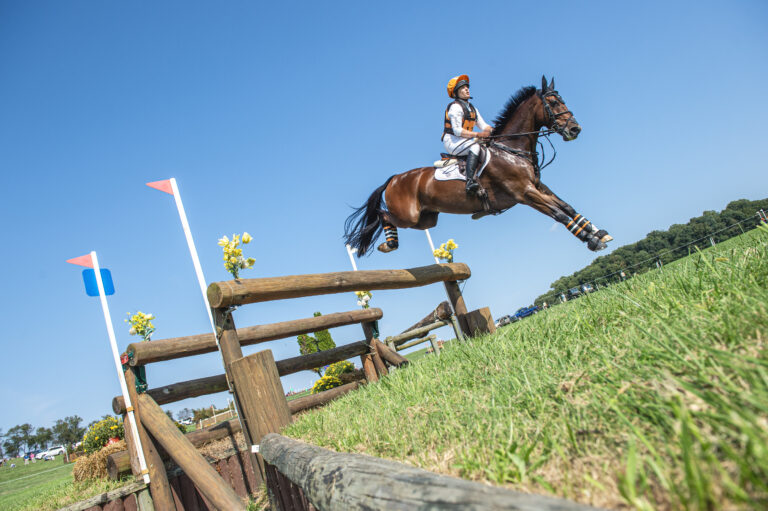At the 2021 Kentucky Three-Day Event in April, U.S. Eventing Performance Director, Erik Duvander, spoke with Practical Horseman about the U.S. Eventing Team. The team for Tokyo had not been selected at that point, but Duvander broke down his role as coach and shed a light on what preparations for the Games look like.
Can you describe your role as U.S. Eventing Performance Director and coach?

My official role is obviously to be Chef d’Équipe when it comes to championships. And then, I work closely with the selectors and I work closely with [U.S. Eventing] in general and work with the funding aspects of it. We set up the program and make sure they have the right people on board. So, there’s a lot of those things. But, what I spend the most time on, is with the riders individually and their individual programs. I travel around consistently and visit the riders and work in their home environments with their trainers and whatever their situation is. And also, in a way, some riders are more independent and others are using me more. Then, at competitions, we’re here to support whether it’s in a training aspect or walking courses—I do a lot of that. Also warm ups and debriefs.
What are you working on with the riders now?
At the beginning of the year we do an individual performance plan and we talk about what areas need to be improved. We have a focus on that. You can’t just hammer one thing all the time. But also, after events, we debrief and look at what could be better. It’s just constantly moving forward—organically moving forward—because, hopefully, the horses are getting a little bit better and then you move on to the next detail that you have to work on. There’s no real specifics. Quite often, I work them according to how the horse is on that day as well. You can’t just push a program and say, “You have to do 15 reps.” It’s got to be a little bit how the horses are on that day as well. So, there’s that flexibility.
It’s very, very difficult to define exactly what I do because it’s so varied. I like going up and watching them go on the gallops. Maybe I’ll gallop a horse for them as well. There are all the areas of their fitness training that I’m also pretty involved with. And obviously, with veterinary stuff, if there was anything that horses can do better, then we talk through that scenario. There’s a lot that’s not in my job description that needs to be done, so that’s what I dig deep and do.
How do you switch from dressage to cross-country to show jumping? How does it all connect?
I have quite a strong philosophy—everything is connected if it’s dressage, show jumping or cross-country. It’s a certain way of riding. And now, we’ve brought on Peter Wylde for show jumping as a specialist. His manner and way of training horses—in the warmup, how they work on the flat before they jump and how they jump—that fits into the cross-country in a way. So, it’s the general way of saying like, “Well, we’re not doing specific dressage and this is how we do it [in dressage] and something different for the jumping and something different for the cross country.” It becomes a common language between all three phases.

What’s the trajectory of the team going into Tokyo?
Two weeks [after Jersey Fresh International], we have a proper veterinary examination where we scan the horses. There’s two veterinarians—our team’s plus another one. So basically, if you have any soft tissue injuries, that’s when it will show up. We just want to make sure that the horses are good before they get back into work again and to make sure that the horses we select are healthy and well.
What happens after the team is selected?
We start to really fine-tune it down because we’re short of time before the Olympics. The ones who didn’t make the list will get a little bit less support for a while. We focus on the candidates and we work closely with them and we have different training scenarios. At Great Meadow, we have a final jump-around that we’re going to do. It’s an event that [U.S. Eventing] sort of put together. It’s not an official event, but it’s for the horses to get a run because we don’t have a competition that is suitable as preparation for the Olympics. After that, we go into quarantine for seven days and then we travel out to Tokyo.
What kind of experience are you expecting in Tokyo as far as logistics and training?
Well the logistics—that’s all handled by experts—and for sure we have a say, but like the traveling of the horses, we don’t actually really have a say much in how and where from the horses travel. We have to go with the Olympic committee where they say that there’s a flight from “X” and then you have to have your quarantine. We have to organize a quarantine that is suitable for that space.
And then, once you get to the Olympics, it’s super well taken-care-of by the U.S. Olympic Committee. They take over and run things. We try to run everything very, very similar to what we do, but then we have this extra layer of support to help us to get everything flowing really well.
For more exclusive international eventing updates with Vita Flex (bit.ly/vita-flex-pro_tokyo) leading up to and including the Games, visit practicalhorsemanmag.com/summer-games-2021.










